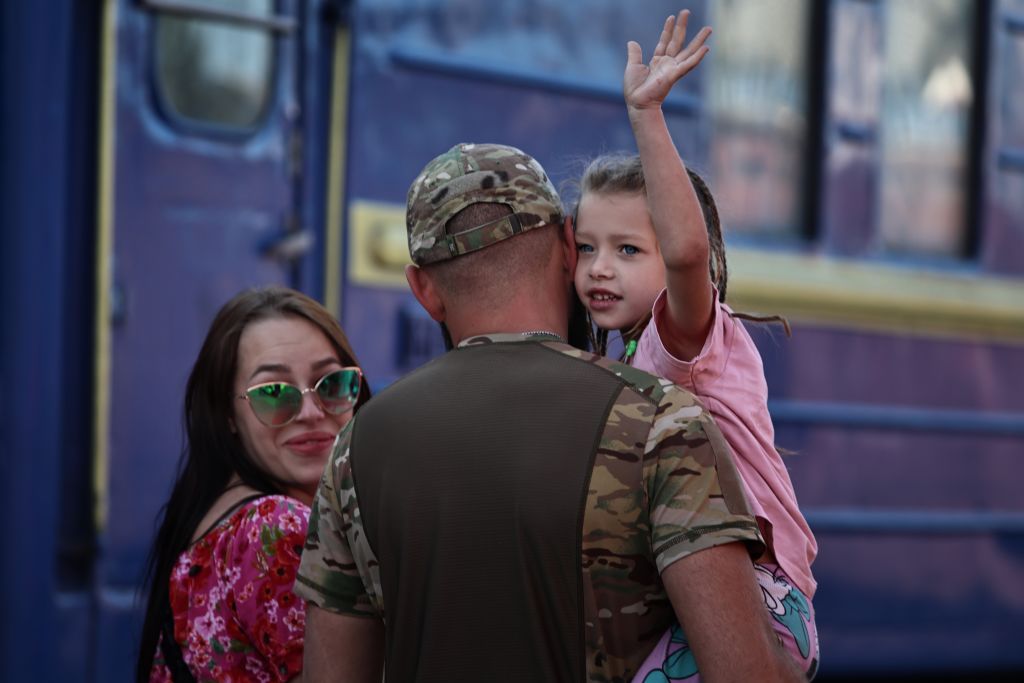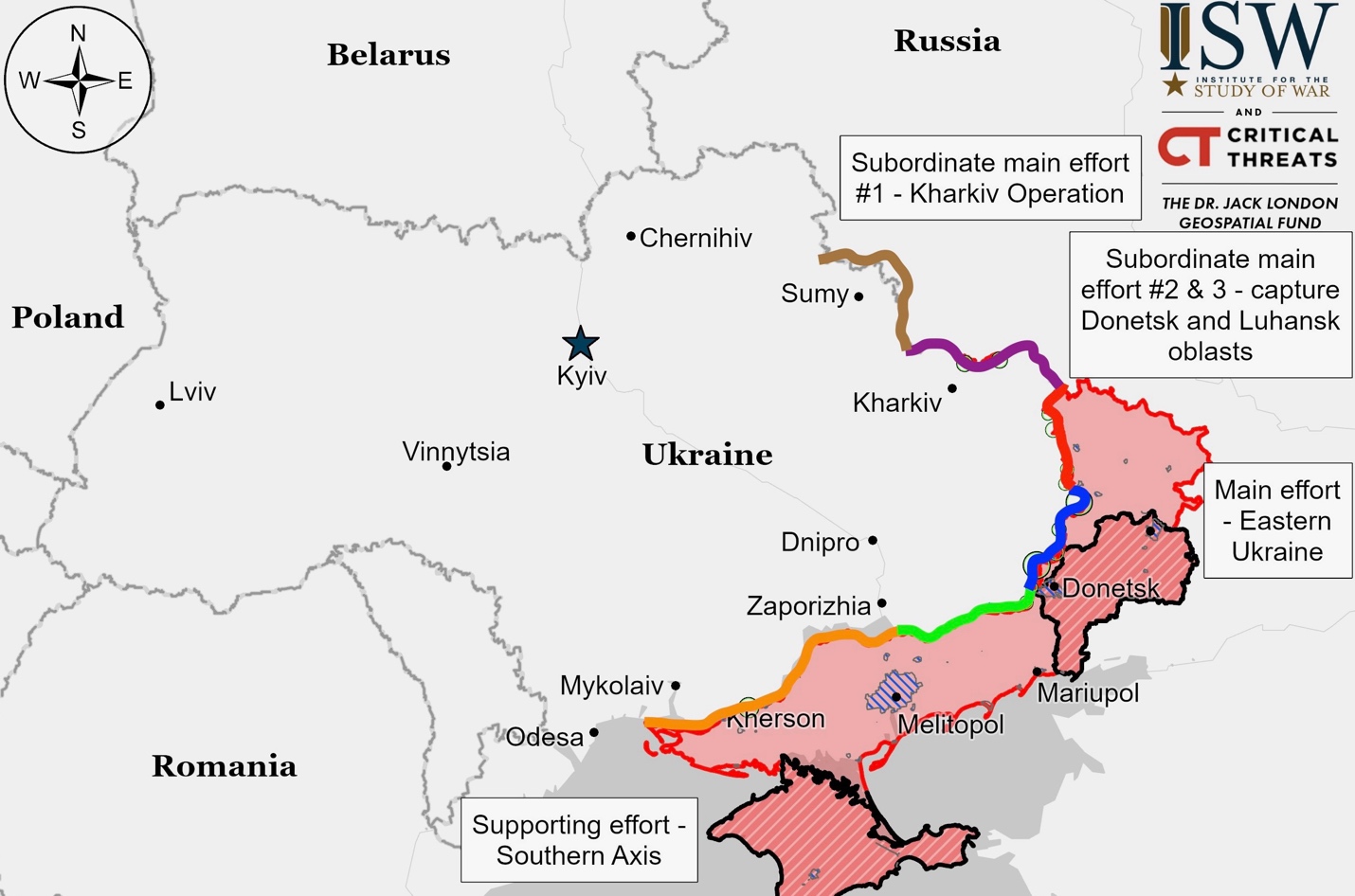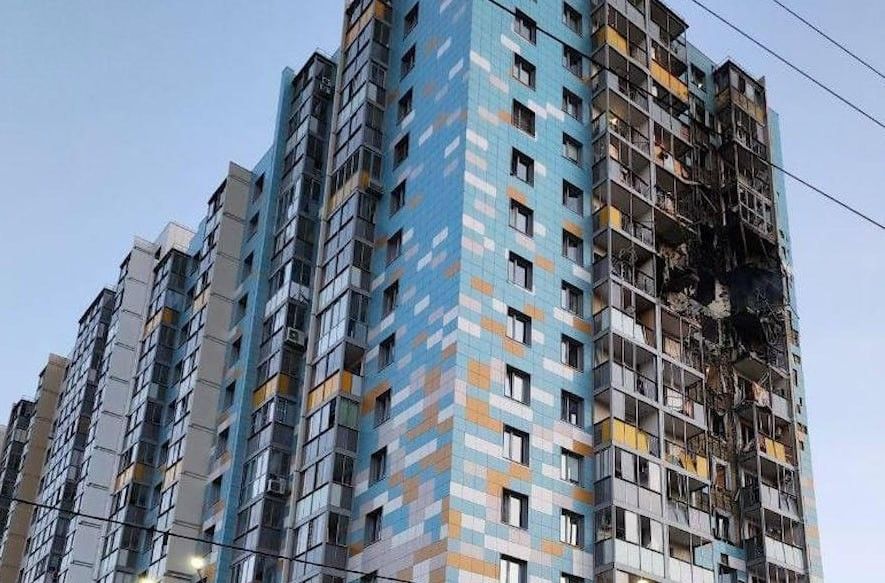Summary of the Day:
US Secretary of State Antony Blinken confirmed Iran’s delivery of short-range ballistic missiles to Russia, escalating concerns about Tehran’s support for Moscow’s war efforts in Ukraine. In response to these developments, President Biden indicated that the US is considering lifting restrictions on Ukraine’s use of US-provided weapons against targets within Russia.
Overnight, Ukrainian forces conducted a large-scale drone attack on multiple regions within Russian territory. On the ground, Ukrainian forces reportedly advanced in Kursk Oblast, while Russian forces made gains near several settlements including Kreminna, Siversk, and Donetsk City.
Meanwhile, Russia and China continued to strengthen their military cooperation through joint exercises and technology exchanges. In a separate development, the Kremlin announced plans to invest significantly in enhancing its ability to restrict internet traffic within Russia.
What Can I Do To Help Ukraine? This is a question I receive all the time. We at Transform Ukraine are building longer-term housing for internally displaced Ukrainians. Visit Rebuild Ukraine for how you can assist in housing a Ukrainian family displaced by the war.
Picture of the Day:
 A Ukrainian soldier sees his family off at a train station in Kramatorsk, Ukraine. (Yan Dobronosov/Global Images Ukraine via Getty Images)
A Ukrainian soldier sees his family off at a train station in Kramatorsk, Ukraine. (Yan Dobronosov/Global Images Ukraine via Getty Images)
Situation On The Land, Sea, and Air in Ukraine

Ukrainian Operations in the Russian Federation – Initiative None
Ukrainian forces advanced in Kursk Oblast, making progress near Korenevo, Sudzha, and other settlements. Simultaneously, Ukraine launched a massive drone attack on multiple Russian regions overnight. Russian authorities claimed to have intercepted 144 drones across nine oblasts, with Bryansk and Moscow areas being the most targeted. The attacks disrupted air traffic near Moscow and in Kazan, with some reported damage in Ramenskoye, Moscow Oblast. One civilian was reportedly killed and three injured. Russian military bloggers criticized officials for downplaying the impacts and called for improved drone defenses. This large-scale drone operation aligns with Ukraine’s recent strategy of targeting Russian oil and military facilities within Russian territory.
 A residential building in Ramenskoye, Moscow Oblast, Russia, damaged during a reported Ukrainian drone attack against Russia. (Astra/Telegram)
A residential building in Ramenskoye, Moscow Oblast, Russia, damaged during a reported Ukrainian drone attack against Russia. (Astra/Telegram)
Kharkiv Front – Initiative Russia
Russian forces launched attacks in northern Kharkiv Oblast, focusing on areas near Hlyboke and Vovchansk. They employed light vehicles such as motorcycles and ATVs in their operations. Despite these efforts, no confirmed advances were made by Russian troops. Ukrainian forces successfully repelled a Russian mechanized assault in the Kharkiv direction, maintaining their defensive positions in the region.
Luhansk Front – Initiative Russia
Russian forces made a small advance southeast of Makiivka, northwest of Kreminna, while continuing attacks along the Kupyansk-Svatove-Kreminna line. They focused on multiple areas, including Petropavlivka, Hlushkivka, Lozova, and several others. A Ukrainian commander reported Russian forces concentrating efforts near Makiivka with a replenished motorized rifle regiment. In the Kupiansk sector of Kharkiv Oblast, Russian forces increased activity, attempting to storm Ukrainian positions near Synkivka and Stelmakhivka. In Kharkiv Oblast, Ukrainian forces reportedly repelled a cross-border raid, destroying Russian armored vehicles.
Donetsk Front – Initiative Russia
Siversk
Russian forces continued their offensive operations in the Siversk area. They managed to make a small advance northwest of Bilohorivka, pushing slightly northeast of Siversk. Over the course of two days, the Russian military conducted a series of attacks targeting several settlements in the vicinity, including Verkhnokamyanske, Spirne, Ivano-Darivka, and Zvanivka. These actions suggest an ongoing effort to consolidate and expand their positions in this sector of the front.
Chasiv Yar
Russian forces maintained their offensive operations in the vicinity of Chasiv Yar. They launched a series of attacks targeting the area, including near Ivanivske and Bila Hora. The Russian military claimed to have captured the settlement of Hryhorivka and most of Kalynivka. Additionally, they reported advances near Zaliznyanske and Klishchiivka. However, these claims of territorial gains remain unconfirmed. The ongoing assaults in and around Chasiv Yar indicate sustained Russian efforts to make progress in this sector.
Toretsk
Russian forces reportedly made minor advances. They claimed to have progressed 800 meters in eastern Toretsk and 1 kilometer from Niu York, though these assertions remain unconfirmed. The offensive continued with attacks near the settlements of Druzhba and Nelipivka. The fighting persisted as both sides sought to gain or maintain control in the contested region.
Pokrovsk
Russian forces reportedly achieved minor gains southeast of Pokrovsk. They asserted the capture of Halytsynivka and advances near Novohrodivka and Selydove, though these claims lack verification. The offensive continued with attacks on multiple settlements surrounding Pokrovsk, including Novooleksandrivka, Vozdvyzhenka, and Ukrainsk. Despite launching numerous daily assaults, Russian forces appear to be facing difficulties in making substantial progress towards Pokrovsk itself.
West of Donetsk City
Russian forces made significant progress west of Donetsk City. They captured the entire settlement of Krasnohorivka, marking a notable advance in the area. Simultaneously, they maintained offensive operations near Heorhiivka, continuing their attacks in that vicinity.
Southwest of Donetsk City
Russian forces made progress on multiple fronts in the Donetsk region. They achieved small advances southwest of Donetsk City, notably near Pobieda, and likely captured Vodyane, northeast of Vuhledar. Their offensive efforts concentrated along the T0524 highway between Paraskoviivka and Kostyantynivka, with daily assaults in this area and continued operations near Kostyantynivka itself.
Significant advances were reported near Vuhledar, where Russian forces captured the South Donbas Coal Mine Number One and potentially the nearby village of Vodyane. This offensive is part of a larger push in the region, with heavy attacks also occurring near Kurakhove and Pokrovsk. The capture of Vodyane, if confirmed, could increase the risk of encircling Vuhledar, a well-fortified mining town crucial to Ukrainian defenses in southern Donetsk Oblast since 2014.
Ukrainian forces claim to be maintaining their defensive positions but acknowledge intense pressure. The ongoing fighting has necessitated civilian evacuations, particularly from Pokrovsk. President Zelensky has discussed the military situation with leadership, emphasizing the importance of depleting Russian combat power in these sectors.
Both sides report heavy losses in what has become a battle of attrition. While the situation near Pokrovsk appears to be stabilizing, the area around Vuhledar is becoming increasingly challenging for Ukrainian forces. If Vuhledar falls, it could threaten Ukrainian control in southwestern Donetsk Oblast and Pokrovsk’s southern flank.
Zaporizhia Front – Initiative None
Zaporizhia-Donetsk Border Area
Russian forces initiated offensive operations near Zolota Nyva, a settlement located on the border between Donetsk and Zaporizhia Oblasts, southeast of Velyka Novosilka. The attacks were carried out, but no confirmed changes to the frontline were reported as a result of these military actions.
Zaporizhia Line
Russian forces persisted in their offensive operations in western Zaporizhia Oblast. The conflict unfolded near the settlements of Mali Shcherbaky and Mala Tokmachka. Simultaneously, there was a notable increase in Russian air strikes across southern Ukraine. However, despite these intensified military activities, no confirmed alterations to the frontline were reported.
Kherson (Dnipro River) Front – Initiative None
Russian forces launched an offensive in eastern Kherson Oblast, concentrating their efforts north of Krynky and in the Dnipro River delta region. The attacks, particularly intense from the direction of Bilohrudove, were part of a series of 40 assaults carried out over a five-day period. While Russian sources claimed progress near Kozachi Laheri, there were no verified changes to the frontline positions. The area north of Krynky bore the brunt of these military operations as the conflict continued to unfold in this sector of Ukraine.
Ukraine News
Russia launched a series of attacks against Ukraine, employing an Iskander-M missile from Crimea, a Kh-31P missile from the Black Sea, and 46 Shahed drones from Kursk Oblast and Yeysk. Ukrainian forces managed to intercept 38 drones across 13 oblasts, with some drones being redirected or crashing due to electronic warfare.
In a separate incident, Russia released sewage from a sugar factory in Tyotkino, Kursk Oblast, into the Seim River, causing pollution to flow downstream into Ukraine. The contamination affected the Seim and Desna rivers in Sumy and Chernihiv oblasts, leading to decreased oxygen levels and fish die-offs. While no immediate risks to human health were reported, the environmental damage in Chernihiv Oblast is estimated at Hr 186 million ($4.5 million).
Ukrainian authorities have charged Russian Lieutenant General Sergey Kobylash in absentia for a missile strike on the Okhmatdyt children’s hospital in Kyiv. The attack resulted in two adult fatalities and injuries to 34 people, including nine children. Kobylash, who already faces other charges related to attacks on Ukrainian civilian targets, is also wanted by the International Criminal Court for strikes on Ukraine’s energy infrastructure.
President Zelensky addressed key issues in a recent meeting, focusing on protecting Ukraine’s energy infrastructure from Russian attacks as winter approaches. The war has caused significant damage to Ukraine’s energy sector, with losses estimated at $16.1 billion. The Health Ministry reported that 886 medical facilities have been restored out of 1,877 damaged during the conflict, with 220 facilities beyond repair.
Prime Minister Denys Shmyhal announced that Ukraine has protected 85% of its energy infrastructure in preparation for potential Russian attacks this winter. The government has allocated substantial funds for this purpose, with additional support from foreign partners.
Ukrainian officials are advising Jewish pilgrims against visiting Uman for Rosh Hashanah due to security concerns amid ongoing Russian attacks. Despite similar warnings last year, over 35,000 people visited Uman for Rosh Hashanah in 2023, up from 20,000 in 2022. Local authorities are preparing for visitors, focusing on sanitation and air raid shelter availability.
Ukraine’s Allies
U.S. Secretary of State Antony Blinken confirmed that Iran has sent short-range ballistic missiles to Russia for use in Ukraine. In response, the U.S., UK, France, and Germany are taking steps to sanction Iran and Russia, including canceling air services with Iran and targeting individuals and organizations involved in Iran’s missile program. Blinken and UK Foreign Secretary David Lammy are set to make a joint visit to Ukraine to show solidarity and discuss Ukraine’s current needs.
President Joe Biden is considering lifting restrictions on Ukraine’s use of U.S.-provided weapons to strike military targets within Russia. This potential policy shift comes as a bipartisan group of U.S. House members urges the removal of these limitations. The topic is expected to be discussed in an upcoming meeting between Biden and UK Prime Minister Keir Starmer.
Meanwhile, Sweden announced its 17th military aid package for Ukraine, valued at $445 million. The package includes various weapons and equipment, with half of the funding allocated for components of Saab JAS 39C/D Gripen aircraft, potentially allowing for their future transfer to Ukraine.
In Canada, a controversial documentary titled “Russians at War,” which portrays Russian soldiers fighting in Ukraine, has sparked criticism due to its public funding. The film was pulled from Canadian broadcaster TVO after protests from Ukrainian-Canadians, despite the Toronto International Film Festival proceeding with its screening.
Lastly, Estonia launched the “ROSE Estonia” project to support Ukrainian refugees in developing self-employment and entrepreneurship skills, further demonstrating international efforts to assist those affected by the ongoing conflict.
Russian Mobilization and Defense Industrial Base
As tensions continue to simmer on the global stage, a German report sheds light on Russia’s dramatic military buildup. The Kremlin has significantly ramped up its defense production since 2022, with staggering increases across key sectors: tank production soaring by 215%, armored vehicles by 141%, and artillery by a formidable 149%.
While much of this surge relies on retrofitting existing stockpiles, experts warn that Russia’s production capabilities are far from temporary. The report projects that even after depleting these reserves, Russia could maintain its momentum, potentially churning out 350 modern tanks annually post-2026. Moreover, efforts are underway to bolster domestic production of artillery and air defense systems, signaling a long-term commitment to military expansion.
Adding to the complexity of the situation, North Korea’s ammunition supplies have reportedly bolstered Russia’s artillery capabilities, highlighting the intricate web of international relations at play. As the world watches these developments unfold, the implications for global security and geopolitical balance remain a subject of intense scrutiny and concern.
Russia’s Allies
In a significant shift in global military dynamics, Russia and China are deepening their defense collaboration. U.S. Deputy Secretary of State Kurt Campbell has revealed that China is providing substantial support to Russia’s defense industry, receiving advanced military technologies in return. This exchange encompasses critical areas such as submarine, aeronautical, and missile technologies.
The partnership is manifesting in joint military exercises, with Russia and China conducting naval drills dubbed “Okean-2024” across various seas and oceans. Additionally, the “Northern/Interaction-2024” exercise is taking place in the Sea of Japan and Sea of Okhotsk. Russian President Vladimir Putin has cited U.S. pressure as the impetus for these joint maneuvers.
Russia’s ambitious “Ocean-2024” naval exercise has commenced, spanning five seas including the Pacific and Arctic Oceans, and the Mediterranean, Caspian, and Baltic Seas. This massive operation involves over 400 warships, 120 aircraft, and 90,000 personnel, serving as a demonstration of military readiness and weaponry.
Despite these overt displays of cooperation, China continues to deny supporting Russia’s war effort in Ukraine. However, Western reports, including statements from Campbell, suggest that China is indeed supplying Russia with materials directly supporting its military operations in Ukraine. This assistance, according to U.S. officials, goes beyond dual-use goods and directly bolsters Russia’s war machine.
The growing military collaboration between China and Russia has raised concerns in Washington, with fears that it could pose a threat to several Asian countries and the United States itself. Secretary of State Antony Blinken has emphasized that any assistance to Russia, including China’s support for its defense industry, prolongs the conflict in Ukraine.
Meanwhile, diplomatic tensions have flared between Ukraine and Slovakia. Ukrainian Foreign Ministry spokesperson Heorhii Tykhyi expressed disappointment with Slovak Prime Minister Robert Fico’s claims about “Nazi” units in Ukraine’s Armed Forces. Fico, who has ended military support for Ukraine and won his fourth term on a pro-Russian platform, made these comments during a Holocaust commemoration. Tykhyi countered by highlighting Ukraine’s history of resisting totalitarian regimes and called for united European efforts against Russian aggression.
This complex web of military cooperation, diplomatic tensions, and conflicting narratives underscores the intricate geopolitical landscape surrounding the ongoing conflict in Ukraine and broader East-West relations.
Controlling the Narrative and Russian Propaganda
Russia’s digital landscape is set for a significant overhaul as the Kremlin unveils plans for a massive upgrade to its internet restriction capabilities. The “Cybersecurity Infrastructure” project, with a budget of 59 billion rubles (approximately $648 million) from 2025 to 2030, aims to enhance the government’s ability to block websites and VPNs. This initiative involves modernizing existing systems and installing new ones to handle increased user traffic, with a focus on replacing foreign equipment with domestic alternatives.
This digital crackdown aligns with recent efforts to steer Russians towards Kremlin-approved social media platforms and away from Western alternatives, signaling a tightening grip on information flow within the country. The move reflects a broader strategy to control the narrative and limit access to external information sources.
Meanwhile, on the geopolitical front, Russian Security Council Secretary Sergei Shoigu has made alarming claims about Ukraine’s intentions. Shoigu alleges that Ukraine is planning to attack the Kursk Nuclear Power Plant (KNPP) and has stated that Russia will not engage in negotiations until Ukrainian forces withdraw from Kursk Oblast. This rhetoric appears to be part of a broader strategy to undermine Western support for Ukraine.
However, analysts are skeptical of these claims. While Ukraine has demonstrated the capability to strike targets within Russia, it has deliberately avoided attacking the KNPP. The consensus among experts is that Russia’s demands for Ukraine’s complete surrender as a precondition for talks indicate a lack of genuine interest in negotiations.
These developments paint a complex picture of Russia’s domestic and international strategies. As the country tightens its control over the digital sphere at home, it continues to employ provocative rhetoric on the international stage, potentially aiming to sow discord and weaken support for its adversaries.
Source Material
Institute for the Study of War – understandingwar.org
The Kyiv Independent – kyivindependent.com
Kyiv Post – kyivpost.com
